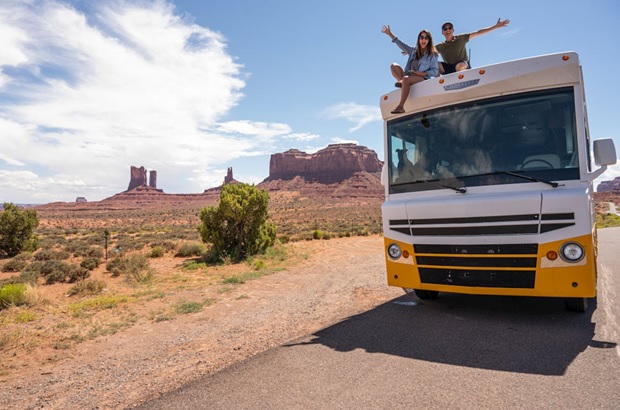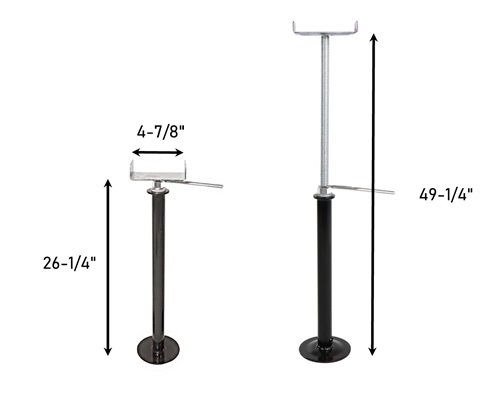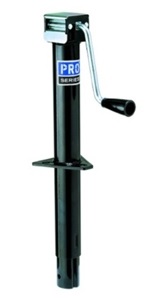Taking an extended road trip in your RV offers the potential for an adventure that promises freedom, exploration, and a chance to connect with the great outdoors.
However, the success of your journey largely depends on how well you prepare and pack. To ensure you have a seamless and enjoyable experience, here's a comprehensive guide on what RV accessories and other items to take with you on your extended RV road trip.
Key Considerations for Extended Road Trips
When planning for long trips, several key considerations come into play that may not be as critical for shorter vacations or weekend getaways.
These include thorough planning, financial budgeting, and wellness aspects of being on the road for extended periods. Understanding these differences can significantly enhance the experience and ensure a smoother journey.
Thorough Planning and Preparation
One of the most crucial aspects of preparing for a long trip is detailed planning and preparation. Unlike short vacations, where spontaneous decisions and last-minute changes can easily be accommodated, long trips require a more structured approach. This includes mapping out the route, scheduling stops, and ensuring that all necessary reservations are made well in advance.
For RV travelers, this might mean booking campgrounds ahead of time, particularly in popular areas where spots fill up quickly. Additionally, understanding the climate and weather patterns of the regions you'll be visiting is vital to pack appropriately and avoid any weather-related disruptions.
Financial Budgeting
Long trips inevitably incur higher costs than shorter ones, necessitating careful financial planning. Budgeting for extended travel involves accounting for fuel, food, lodging, and entertainment expenses over a longer period.
Health and Wellness
Health and wellness take on added importance during extended trips. Prolonged travel can lead to fatigue, disrupted routines, and potential exposure to different health risks. It's crucial to maintain a balanced diet, get regular exercise, and ensure adequate rest to stay healthy on the road.
For RV travelers, creating a routine that includes time for physical activity and relaxation can mitigate the physical toll of long-term travel. Access to healthcare is another significant consideration; knowing the locations of medical facilities along your route and carrying a well-stocked first aid kit are essential steps that differ from the needs of a brief getaway.
Adaptability and Flexibility
Adaptability and flexibility are key when embarking on long trips. Unlike short vacations where itineraries can be rigid and packed with activities, long trips benefit from a more flexible approach.
Plans may change due to weather, mechanical issues, or simply discovering new places you want to spend more time in. Being open to adjusting your schedule and having contingency plans can turn potential setbacks into new adventures. This adaptability ensures that you can handle unexpected situations with ease and continue to enjoy your journey despite any hurdles.
Packing For Your Extended RV Road Trip
Essential Documents and Personal Items
- Driver’s License and RV Insurance: Ensure your driver's license is valid and your RV insurance is up to date.
- Vehicle Registration and Roadside Assistance Information: Carry your RV’s registration and details of any roadside assistance programs you are a part of.
- Personal Identification and Health Insurance Cards: Keep your ID and health insurance cards handy.
- Emergency Contacts and Medical Information: A list of emergency contacts and any necessary medical information should be easily accessible.
RV Maintenance and Safety Gear
- Spare Tires and Repair Tools: Carry at least one spare tire, a jack, a lug wrench, and a tire repair kit. RV tire inflation tools and pressure monitors can come in handy here.
- Tool Kit: Include basic tools like screwdrivers, wrenches, pliers, a hammer, and duct tape.
- Jumper Cables and Battery Charger: Essential for emergencies.
- Fire Extinguisher: Ensure it is in good working order and easily accessible.
- First Aid Kit: A comprehensive first aid kit including bandages, antiseptics, pain relievers, and any prescription medications.
Kitchen and Cooking Supplies
Cooking on the road is one of the joys of owning an RV, but doing so comfortably means stocking up on the right RV kitchen essentials.
- Cookware and Utensils: Pots, pans, knives, spatulas, tongs, cutting boards, and mixing bowls.
- Dishware and Cutlery: Plates, bowls, cups, and silverware.
- Cooking Appliances: Portable grill, camp stove, and electric skillet.
- Food Storage: Airtight containers, Ziploc bags, and a cooler.
- Cleaning Supplies: Dish soap, sponges, dish towels, and trash bags.
- Non-Perishable Food Items: Canned goods, pasta, rice, cereals, snacks, and condiments.
- Fresh Produce and Meats: Plan for meals and store them in your RV refrigerator.
Clothing and Personal Items
- Seasonal Clothing: Pack clothes suitable for various weather conditions, including layers for cold weather, rain gear, and swimwear.
- Footwear: Comfortable walking shoes, hiking boots, sandals, and any specialty footwear.
- Toiletries: Toothbrush, toothpaste, soap, shampoo, conditioner, razors, and personal hygiene products.
- Laundry Supplies: Portable washing machine or hand wash supplies, laundry detergent, and a drying line.
Entertainment and Recreation
- Books and Magazines: For leisure reading.
- Games and Puzzles: Board games, card games, and puzzles for indoor entertainment.
- Outdoor Gear: Bicycles, RV bike carriers, fishing equipment, hiking gear, and sporting goods.
- Electronic Devices: Tablets, laptops, cameras, and portable speakers.
- Chargers and Power Banks: Ensure all your devices stay powered.
Camping and Outdoor Living
- Camping Chairs and Table: For outdoor relaxation and dining.
- Awning or Tent: To provide shade and shelter.
- BBQ Grill and Charcoal: For outdoor cooking.
- Lanterns and Flashlights: Essential for lighting at night.
- Insect Repellent and Sunscreen: Protect against bugs and sunburn.
Navigation and Communication
- GPS Device and Maps: Ensure you have a reliable RV GPS device and physical maps as a backup.
- Mobile Phone and Walkie Talkies: For communication, especially in areas with poor cell coverage.
- Road Atlas and Travel Guides: Useful for planning routes and discovering attractions.
RV Living Essentials
- Bedding and Linens: Sheets, blankets, pillows, and towels.
- Cleaning Supplies: Broom, dustpan, vacuum cleaner, and cleaning agents.
- Water and Sewer Supplies: Hoses, water filters, sewer hoses, and tank treatment chemicals.
- Electrical Supplies: Extension cords, adapters, and an RV surge protector.
Financial and Legal Preparation
- Emergency Cash: Keep some cash for emergencies and places that don’t accept cards.
- Credit and Debit Cards: Ensure you have sufficient funds available.
- Emergency Fund: A dedicated fund for unexpected expenses.
Health and Fitness
- Prescription Medications: Ensure you have enough supply for the duration of your trip.
- Vitamins and Supplements: Maintain your health while on the road.
- Fitness Equipment: Yoga mats, resistance bands, or small weights for exercise.
Enjoy Your Trip!
Preparation is key to enjoying your extended RV road trip. By ensuring you have all these RV essentials packed and ready, you'll be well-equipped to handle anything the road throws your way. Be sure to take a look around our RV store to stock up on everything you could possibly need, no matter how long you plan on being on the road.

























